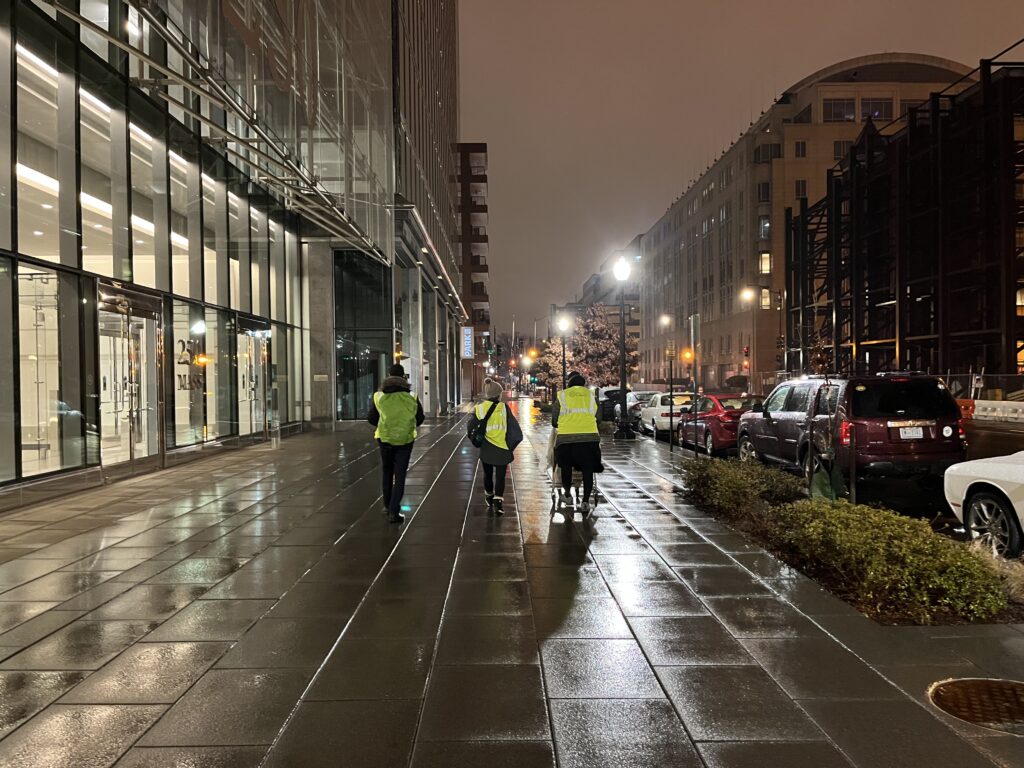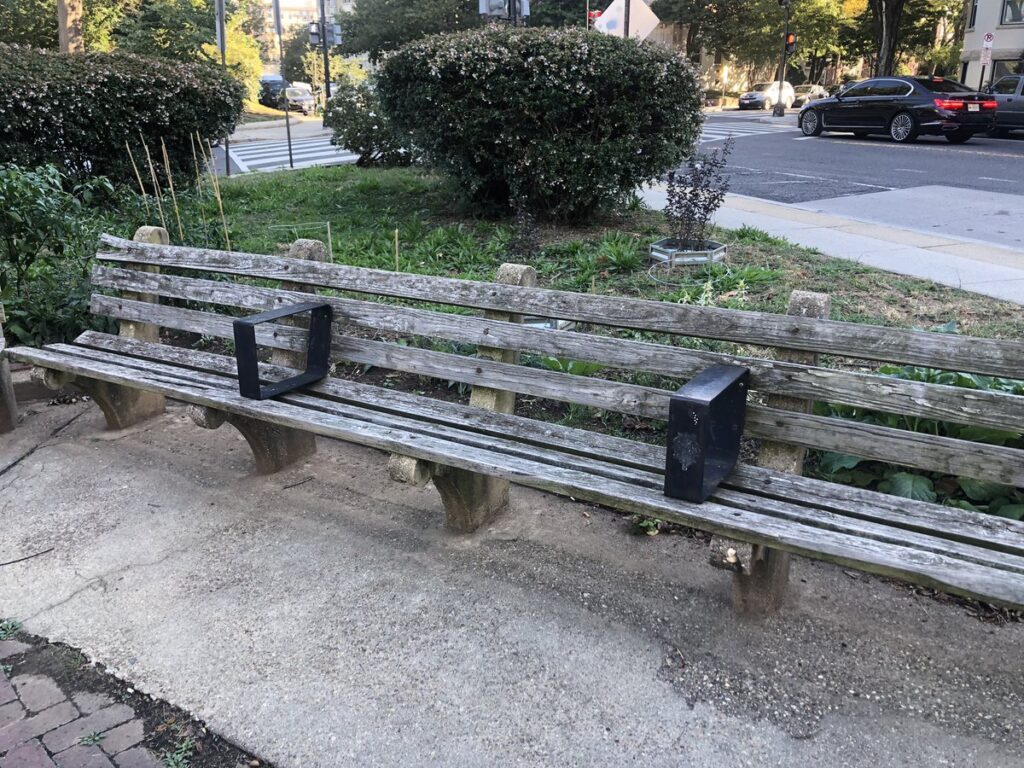If D.C. were a state, it would be the state with the highest concentration of homelessness, according to a new report from the U.S. Department of Housing and Urban Development (HUD).
But the report also suggests the District has had more success than other parts of the country in reducing homelessness and providing shelter.
On one night in 2023, at least 4,922 people were homeless in D.C. — about 73 out of every 10,000 residents. When looking at D.C.’s homeless population as compared to the 50 states, the District has the highest prevalence of homelessness — ahead of New York (about 52 per 10,000) and Vermont (about 51 per 10,000). But compared to other cities, D.C. falls to 15th on the list, according to a tally by U.S. News and World Report.
These findings, which HUD released in December, are based on the 2023 Point-In-Time (PIT) Count — a survey of unhoused people across the country. Every January, homeless service systems count how many people are sleeping outside or in shelters in their jurisdiction in one night.
The count is largely acknowledged as an undercount, missing some unhoused people. For instance, it only measures the number of people who are “literally homeless,” excluding anyone who is homeless but staying with family or friends. It also only captures the number of people who are homeless on one night, not across a year, which is often much higher. In 2021, for example, D.C.’s PIT Count found 3,700 unhoused people, but more than 8,000 people interacted with the homeless services system over the year.
Still, the PIT Count is the main way cities and states measure trends in homelessness and the demand for the shelter system. D.C. will conduct its 2024 PIT Count on Jan. 24.
How does homelessness in DC compare?
Homelessness in D.C. increased about 12% from 2022 to 2023, which is in line with a 12% increase nationally.
But since 2007, the first time the United States conducted the PIT Count, homelessness has decreased in D.C. by 7.5%. Between 2020 and 2022, D.C. also saw one of the largest decreases across the country according to the report, largely driven by drops in family homelessness.
Nationally, numbers have gone in the opposite direction. According to the 2023 PIT Count, at least 653,100 people experienced homelessness in a single night in the United States. That’s the highest number recorded since the count began.
Though the numbers suggest D.C. has had more success addressing homelessness than the rest of the country, local advocates and service providers are alarmed at the recent increase. It’s the first time homelessness has increased in the city since 2016, when D.C. launched its first plan to end homelessness, Homeward DC. Providers worry the reductions in homelessness in 2021 and 2022 resulted from pandemic-era rental assistance and housing programs that have since expired. Rent also continues to rise in the District, and evictions have increased.
Compared to other parts of the country, those experiencing homelessness in the District are more likely to be single adults and people who stay in shelters, suggesting the city is ahead in providing shelter and ending family homelessness.
While the District’s homeless encampments continue to draw a lot of national attention, D.C. has a lower rate of unsheltered homelessness compared to the rest of the country. About 17% of people who were surveyed in D.C. were unsheltered, living in encampments or other outdoor spaces. That number is far below the national average of nearly 40%. In seven states, including California, more people reported living outside than in shelters.
That said, the PIT Count is conducted in the middle of winter when D.C. residents have a right to shelter and the city opens additional sites to protect residents from the cold weather, so a higher portion of residents have access to indoor shelter than year-round.
The city has also made investments in ending and preventing family homelessness. In the District, about a quarter of people experiencing homelessness are part of a household with children, compared to 30% nationally. D.C. regularly houses more families than are even measured in the PIT Count each year, and families who experience homelessness in D.C. are met with a better-resourced system than those living alone.
Partially because of the disparity in resources, local officials argue, homelessness among individuals has increased several times over the last few years. Individuals who experience homelessness in D.C. are older and more likely to be Black compared to elsewhere in the country.
In D.C., and the nation, people of color are overrepresented in the homeless population. In the District, 81% of people experiencing homelessness in D.C. identified as Black compared to 45% of the total population. Nationally, between 2022 and 2023, homelessness increased notably for people who identify as Asian American and Hispanic or Latino. That trend was not evident in D.C.
The PIT Count also suggests that D.C. has a higher rate of senior homelessness compared to the rest of the country, with more than 30% of people experiencing homelessness in D.C. over the age of 55; that compares to about 20% nationally.
While homelessness nationally increased in 2023, so did resources to help the growing population. Throughout the country, there was a 7% increase in the number of beds available, with much of the growth in emergency shelters. Programs for people who were formerly homeless, like voucher programs, also increased, with 32,000 more spots in permanent housing.
In D.C., however, the rate of investment in housing programs is slowing. While the city created 230 new permanent supportive housing vouchers in fiscal year 2024, the increases pale compared to past investments. Advocates say the city needs to fund more rental assistance and vouchers to decrease homelessness in the long term.








